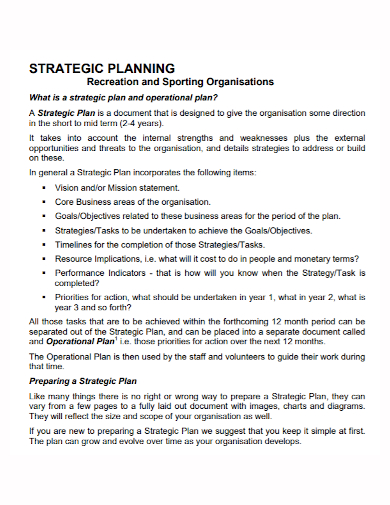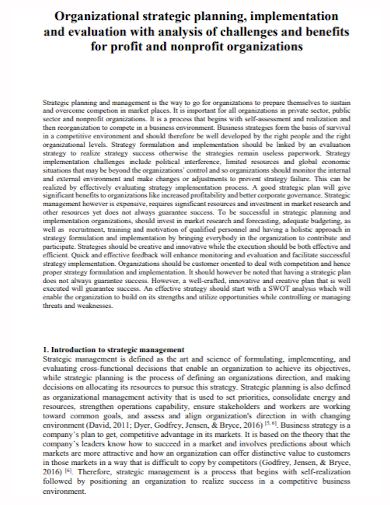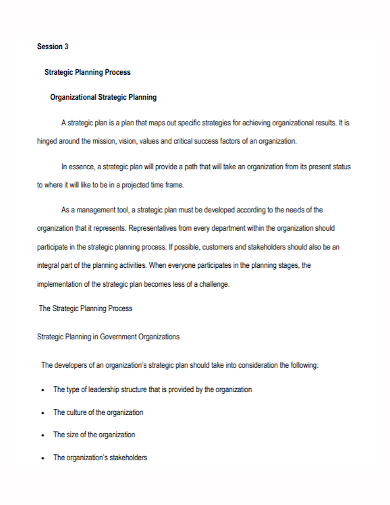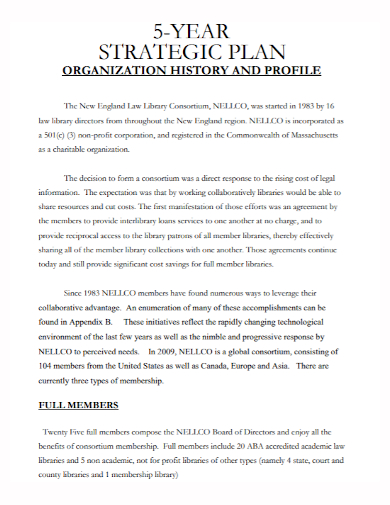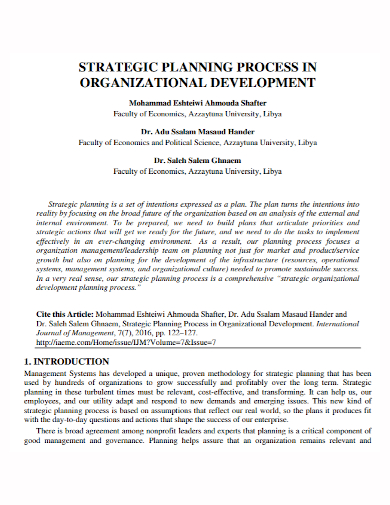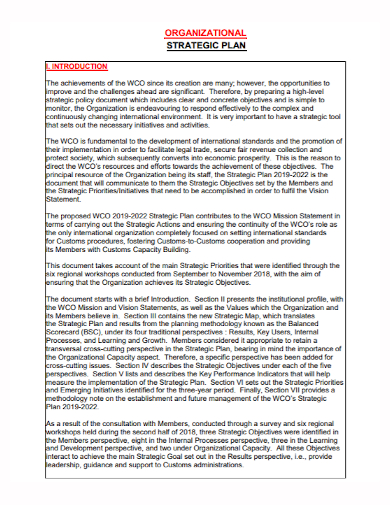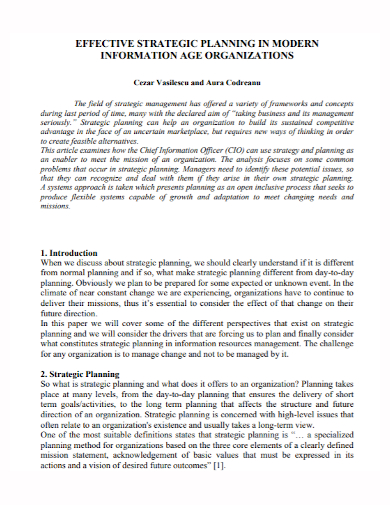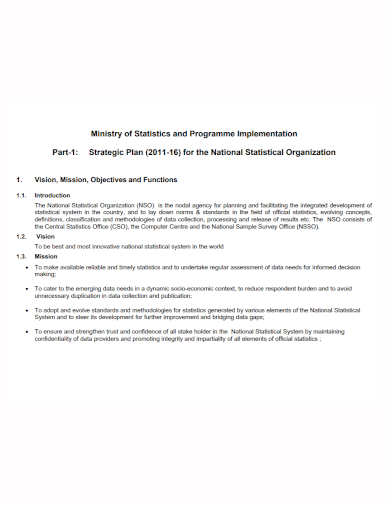The importance of having a detailed plan in place is widely recognized by organizations and businesses all over the world. Also important is that they understand the strategies that they intend to use both within and outside their respective businesses and organizations. This ensures that everyone in the organization is on the same page and prepared for any situation that may arise during the development and implementation of strategies that will benefit all parties involved in the enterprise. As a business owner, you must be capable of putting together a comprehensive plan in order to avoid wasting time and money on mistakes that could have been prevented. The time and money they save by not wasting time and money on things that could have been avoided will add up to a significant amount. We have a written statement of our company’s goals and objectives, which can be found on our website, which we refer to as our “strategic plan.” A well-written strategic plan, on the other hand, ensures that everyone and everything works together to complete the project successfully and produce tangible results. Documents like this are frequently referred to by those in charge of the day-to-day operations of a company. The information contained in these documents can be extremely useful if you want to make significant changes to the way your organization operates.
You will be better prepared for any situation that may arise at work or during the course of a typical work week if you develop strategic plans. Examine the project to ensure that you and the rest of the team are on the same page with regard to its objectives. Put specific business strategies in place, and make certain that they are carried out in a timely and accurate manner to ensure success. Your company could suffer a catastrophic loss if the strategies you intend to employ fail to produce results, or if your progress is halted in the middle of implementing or developing them. Take a look at these organizational strategic plan examples we’ve compiled for you in the following section if you want to make the most of the document you’re about to write. It is important to look at the document and learn what it does in order to fully comprehend how it functions and appears to others. After you’ve tried to figure out what a strategic plan should look like, you can use these examples of strategic plans to assist you in writing one for your own organization.
10+ Organizational Strategic Plan Samples
1. Organizational Strategic Plan Template
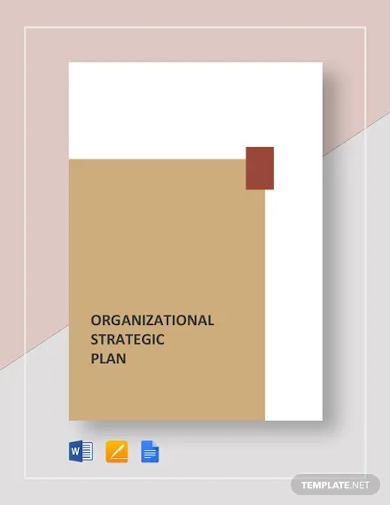
2. Nonprofit Organization Strategic Plan Template
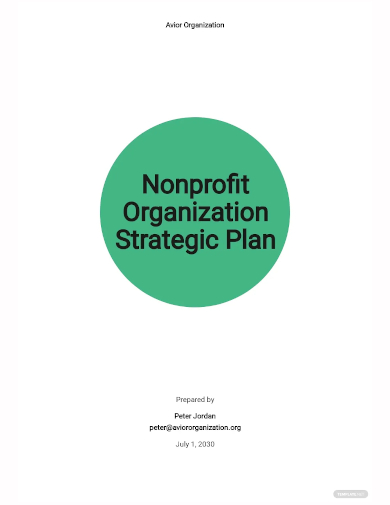
3. Organizational Strategic Marketing Plan Template
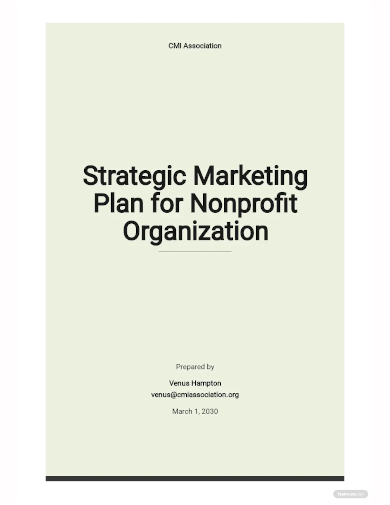
4. Organizational Strategic Plan
5. Organizational Implementation Strategic Plan
6. Organizational Session Strategic Plan
7. 5 Year Organizational Strategic Plan
8. Organizational Development Strategic Plan
9. Sample Organizational Strategic Plan
10. Standard Organizational Strategic Plan
11. Printable Organizational Strategic Plan
What Is an Organizational Strategic Plan?
When you work for a company, you can create strategy and implementation plans that lay out the specifics, strategies, and timelines for developing and implementing the company’s strategies. The details, strategies, and timelines for developing and implementing your company’s strategies are all detailed in strategy and implementation plans. Strategic plans, on the other hand, aren’t limited to one industry and can be used for a variety of purposes. Developing a strategic plan is the most effective first step toward successfully launching your business, as long as you have a business concept that you intend to pursue and complete. A road map in business is a list of steps and actions that must be completed before a company can begin implementing its strategies. Strategic plans are typically more than a few pages in length due to the factors mentioned previously. The plan, however, will be one page long in this case. After reading your completed strategic plan, it is critical that everyone in your organization understands what they need to do next to succeed. When writing your plan, make sure it’s very detailed and easy to understand so that your audience knows what to do after reading it. The most important characteristic of a strategic strategy is its ability to comprehend it. This is especially true right now, as you try to cram a lot of data onto a single page.
How To Write an Organizational Strategic Plan
Creating a strategic plan requires much more than scribbling a list of tasks and activities on a blank piece of paper. It is a step-by-step procedure. The first step is to ensure that your objectives are precise and easily understood by others. Then you must document the steps required to get there, as well as explain and demonstrate them to every member of your organization. You can achieve your goal by simply remembering and following a few simple steps. The sections that follow on this page will go into greater detail about each of these steps.
- Define your goal
Before you can begin developing your strategic plan, you must first have a firm grasp on what you want to accomplish and how you intend to accomplish it. Without a clear goal in mind, beginning a project is a recipe for disaster. Acquainting yourself with the situation and the people you’ll be interacting with as well as the environment in which you’ll be working are critical first steps. It is critical to use strategic criteria such as the SMART framework to ensure that your goals are realistic and attainable. - List down the steps
When you begin a new project, make a list of the steps necessary to accomplish your objectives. It is now necessary to place an order, but refrain from getting too excited. Kindly inform us of your plans for the next few days so that we can make appropriate arrangements. There will be no additional tasks or side projects to divert your attention away from your primary task at the start of the project. It is critical to document everything that must occur when creating a plan. When completing tasks, ensure that sufficient information and parameters are included to ensure that they are completed properly. - Prioritize tasks and deadlines
If you follow the steps, making a list of everything that needs to be done and organizing it in the appropriate sequence is simple. To save time and money in the long run, start with the stages that will take the most time and money and work your way down from there. Before moving on to the next phase, it’s vital to keep track of any chores that need to be accomplished. - Set milestones
As a result of a small number of minor successes, larger victories aggregate over time, eventually leading to greater overall success. Your team will have lots of reasons to be thrilled as the deadline approaches, given how close it is. You might provide a pat on the back to your team members from time to time to encourage them to keep up the good work. This can also help to lift their spirits and motivate them to keep going on their trip. - Identify the resources needed
Before you begin working on your project, double-check that you have all of the necessary ingredients. It’s usually a good idea to gather all of the resources you’ll need before starting a project. You must commit to the project for the entirety of its completion if you wish to achieve any deadlines you’ve set for yourself. Keep your focus on the task at hand and avoid being sidetracked by the fact that you’ve ran out of materials or other supplies in the middle of it. - Visualize your plan
Your action plan should contain all of the knowledge you’ll need to know about how to apply your tactics, as well as how to develop guidelines for how they should be employed, in order to be effective. Consider how the strategy will work in practice to see if it will perform as expected. Assess your capacity to carry out your obligations and improve your comprehension of the plan. - Monitor, Evaluate, Update
A documented plan’s existence does not mean that it is comprehensive. If you want to get the best results, you should maintain your action plans up to date. They’ll continue to evolve and develop as time goes on. It will change and evolve over time, and you will be able to make adjustments whenever you want.
FAQs
What is a good strategic plan?
A well-implemented strategic plan unites the vision and makes measuring progress easy. An organization’s purpose and vision values are more generic, whereas strategies are considerably more precise. They aid in the mapping of long-term plans to particular goals and activities that may be performed immediately.
What are examples of strategic actions?
- Planning
- Ordinance
- Community practices
- Incentive
What are the 4 components of strategic planning?
- Context
- Long-term plan
- Short-term plan
- Implementation plan
If you want to complete a project successfully, you must first devise a strategy. It allows your concept to be tested. We believe that if you follow the methods and templates we’ve provided after reading this post, you’ll be able to build a good action plan on your own.
Related Posts
FREE 13+ HR Operational Plan Samples
FREE 12+ School Operational Plan Samples
FREE 10+ Fundraising Action Plan Samples
FREE 10+ Nonprofit Fundraising Plan Samples
FREE 10+ Strategic Staffing Plan Samples
FREE 9+ Primary School Operational Plans
FREE 8+ Change Management Strategy Samples
FREE 6+ Conflict Management Strategy Samples
FREE 4+ Strategy Execution Plan Samples
FREE 15+ Asset Management Plan Samples
FREE 15+ Sample School Strategic Plans
FREE 14+ Business Operational Plan Samples
FREE 10+ Strategic Staffing Plan Samples
FREE 10+ HR Department Plan Samples
FREE 10+ Strategic Campaign Plan Samples

